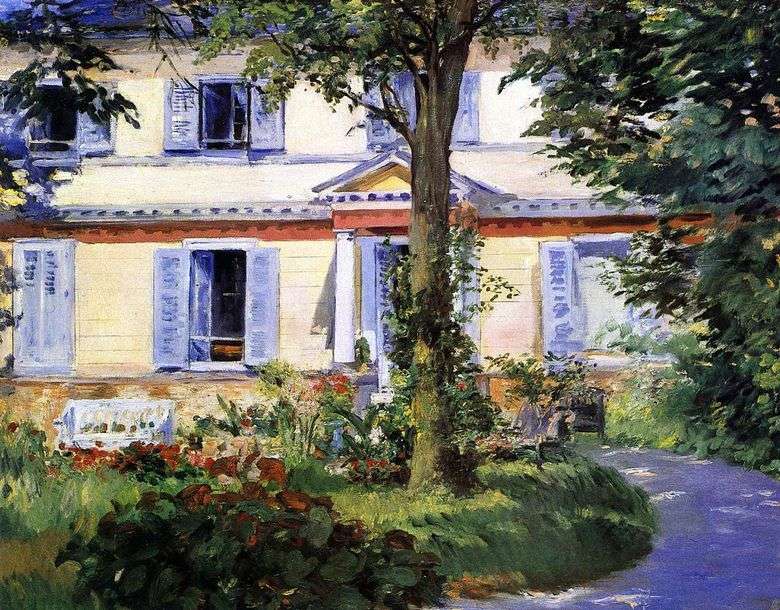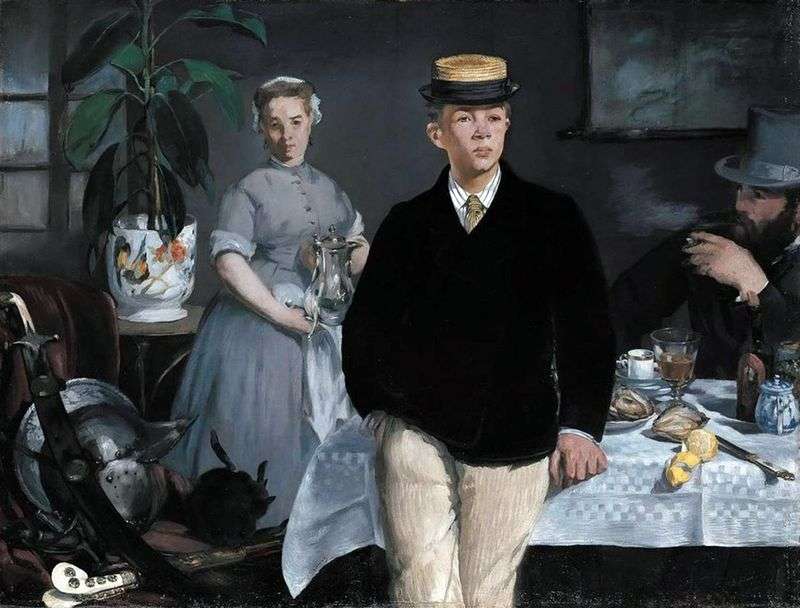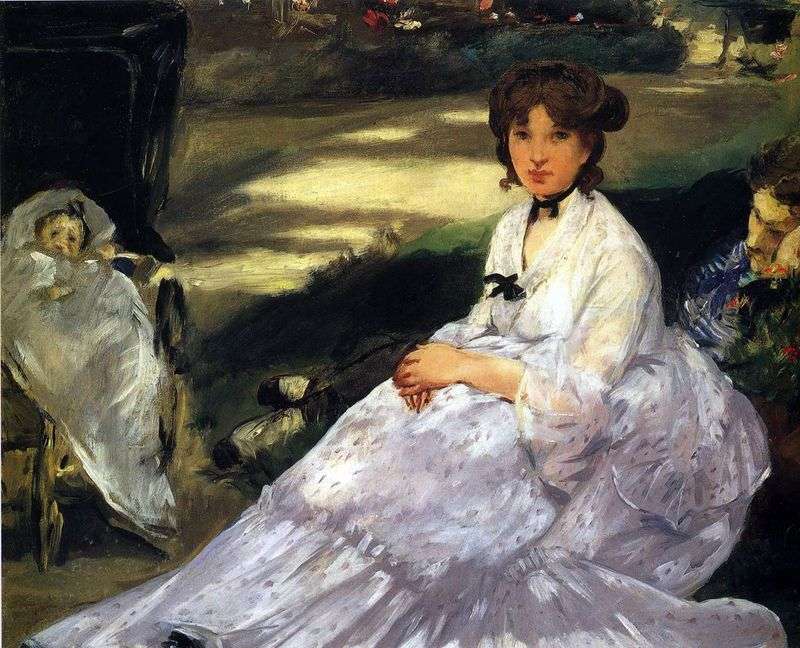
The painting “House in Ruel” was created by Manet in 1882. From the late 1870s, the artist increasingly felt unwell and pain in his legs and back. But later the difficult diagnosis did not affect Man’s creative will, and he continued to work hard and create more and more new works. However, the disease made itself felt. Increasingly, the artist had problems with the coordination of small movements.
First of all, she suffered fine motor skills, which were responsible for drawing skills and the ability to hold a brush. But the artist struggled with all his strength with his illness and did not become disheartened. In this difficult life period, Manet created such beautiful paintings as “Autumn”, “Portrait of Henri Rochefort”, “Bar in Folies Bergere”, “House in Ruelle” and many others. The work on the painting of pictures took Edward Mane a lot of energy. He rarely went for walks, visited friends.
The artist spent almost all his time in the studio. He understood that in such a position he should not lose a day or a minute. Therefore, he painted, painted passionately and selflessly. Increasingly, Manet began to abandon the creation of large-scale, large-format works, and focused on small-sized still lifes and landscapes that resembled cute colorful sketches, one of which can be called “Carnation and clematis in a crystal vase.” Mane’s thin, light little bouquet was depicted in a simple vase, without unnecessary decorations that would have looked unnecessarily. Calm lilac-lavender background creates a feeling of haze, gentle weightless opacities. Light and air is felt in every petal.
The background is calm and not replete with drawings and lush ornaments, which allows concentrating attention on the beauty created by Mane floral composition of carnations and clematis, which is characterized by understatement, and ghostlyness, and awe, and the fragility of contour lines. Manet liked to depict various types of flowers, to build floral arrangements. The painting “House in Ruel” also traces this floral motif, important for painting Manet. In front of a brightly lit house there is a flowerbed, with various flowers and plants planted on it. The picture seemed to stop time. The sun always shines here, the days are never overcast, amazing nature blooms and pleases the eye. A beautiful color combination can be considered the choice of the artist for decorating the house of yellow, blue and coral shades.
Blue shutters look elegant, not fancy, and emphasize the delicate tone of the walls of the house. The coral-colored border serves as a necessary color accent. Closer to the flow of sunlight, the shutters look light blue to whitish spots, while if you move deep into the garden, the windows of the house become saturated deep blue color. In the garden there are benches painted white. Everything was created to relax and enjoy life, to contemplate its measured flow in isolation from the hustle and worldly problems. The shadows on the walkway leading to the house are of a similar blue shade as the color of the window shutters. Transitions from light to shade are carried out rapidly and boldly. The grass cover of the lawn next to the house consists of various shades of green, ocher inclusions, warm yellow colors. The trees are covered with lace foliage,
The picture turned out to be multicolored, optimistic. I can’t even believe that the work “House in Ruel” was created at such a difficult time for the artist when his state of health was undermined by a serious illness for which at that time there was no medicine and optimal treatment. Etude sketch “Home” breathes light and warmth. There are no notes of sadness or anxiety in it, everything is filled with peace and quiet joy. What is lacking is, perhaps, some kind of sweet young face or a carefree glimpse, casually thrown by some of the good friends of the artist, pleasant conversation or radiant children’s laughter. Nevertheless, the lively juicy colors in which the picture is solved give rise to the one-piece image of the house that is pleasant to the heart.
Home is the main word in the life of every person along with his family, therefore, for Manet’s painting, the concept of home and family hearth remained valuable and important throughout his entire creative activity. Home is a place that connects close people, strengthens family ties, serves as protection against trouble and failure. Family ties are the most important, without them it is very difficult for a person. When you have a family is always easier, there is always one on whom you can rely and on whose shoulder to lean. The house is a fortress, protecting us from troubles and spiritual turmoil. We always make sure that our accommodation is cozy and warm. To do this, we in every possible way improve it, decorate it, care for garden plants, try to preserve and make it pleasant and unique every moment of our life together.
For the impressionist Manet, each moment of life, every particle of being, was always the main thing. Therefore, he sought to the end of his life to fully grasp all the beauty of the surrounding world, and with the help of paints and a special artistic vision to embody it on canvas without “smoothing”, which was typical of the masters of academic painting. And to create your own individual look, which would manifest itself in the picturesque canvases and was available for the perception of people who appreciate his work and just admired the audience. Painting Manet, according to Zola, made a tart and even harsh impression. But this impression was the first, then the necessary and inevitable process of immersion into the picture, into the structure of its images, which are made up of spots that are chaotic at first glance, always took place.
 Roses in a Crystal Vase by Edouard Manet
Roses in a Crystal Vase by Edouard Manet In the boat by Edouard Manet
In the boat by Edouard Manet Casa en Ruel – Edouard Manet
Casa en Ruel – Edouard Manet Eel and Mullet by Edouard Manet
Eel and Mullet by Edouard Manet Breakfast in the workshop by Edouard Manet
Breakfast in the workshop by Edouard Manet Women Drinking Beer by Edouard Manet
Women Drinking Beer by Edouard Manet In the garden by Edouard Manet
In the garden by Edouard Manet Cherry Boy by Edouard Manet
Cherry Boy by Edouard Manet